Installing Semi-Rigid Dryer Hose to Prevent Fire Hazard
It’s time to take on a little fix in your laundry room. This single upgrade can prevent your home from a house fire. Let me show you how installing semi-rigid dryer duct can prevent a fire hazard!
Installing Semi-Rigid Dryer Hose to Prevent Fire Hazard
Last year when I showed you how to clean out your dryer hose to prevent dryer fires, I didn’t realize that I still had a fire hazard living in our laundry room. Since then, I stumbled across a video that scared the bejeezus out of me. Matt from Great Lakes Home Performance created this video showing what happens to foil dryer hoses.
I knew that white plastic dryer hoses were bad and had previously replaced ours with the flexible foil hose. But, I felt duped when Matt showed what happens to those “foil” hoses. First, what I didn’t realize is that those shiny metal hoses aren’t foil! They are made of flammable plastic. Go ahead, run to your dryer right now and see what type of duct work you have — I’ll wait. If it is white or shiny foil, I’ll show you how to replace it with semi-rigid duct to keep you and your home safe from a dryer fire. This is an easy tutorial, you can definitely do this (if your exterior dryer vent is on the 2nd floor, you can keep the same vent and just replace the hose.)
Materials:
(I’ve included affiliate links for your convenience. I earn a small percentage from a purchase using these links. There is no additional cost to you. You can read more about affiliate links here.)
- Semi-Rigid Transition Dryer Duct Kit
- 2 Adjustable Duct Elbows
- Tin Snips
- Drill or flat head screwdriver
- 4 Hose clamps (2 included with the kit above)
- Pliers
- Gloves
How to Replace the Dryer Vent Cover:
First, take a look at your dryer vent outside your house. Is it loaded with lint? If so, follow my tutorial for cleaning your own dryer vent.
Does the vent stick open or have gaps in it?
Were you nodding your head, yes? Well, if you like to keep your home rodent and bug-free, I highly recommend replacing the exterior vent at this time.
Detach the dryer duct (hose) from the wall inside your home first. Use the screwdriver to loosen the hose clamp.
Or if you have the tension style clamp, pinch the clamp wings together to release the hose.

Head back outside. Unscrew the mounting screws from around the dryer vent and lift the dryer vent off.
Slide the new vent into the hole and attach it to the house with the screws provided.
For additional draft and bug protection, caulk around the edge of the vent cover where it meets the house.
When the dryer is on and air is forced through the duct, the louvers will open.
When the dryer is off the louvers will close and prevent unwanted house guests (spider, mice, etc.) from taking up residence into your dryer.
Ahhhh, much better, right?!
Periodically check the vent to make sure the louvers close and there is no lint build-up.
How to Replace the Dryer Duct Hose:
Pull your dryer out from the wall. Now is a good time to vacuum behind it to clean up any lint that has accumulated back there.
Hold the adjustable elbow next to the vent duct where it enters your laundry room. If it is too long, trim it with the tin snips to the depth of the elbow.
1) Feed the collar over the vent duct to cover the hole in the wall (and seal out any drafts.) Attach the collar with screws. 2) Feed one hose clamp over the vent duct.
3) Slide one elbow over the vent duct. 4) Tighten the hose clamp with the screwdriver until the elbow is secured to the duct. Tug lightly to make sure it won’t inadvertently slip off.
If you are having trouble slipping the elbow into the duct, you can use pliers to cut the tabs on the crimped end to allow you to collapse the collar a little more.
Remove the semi-rigid duct from the packaging. Extend the hose only long enough to reach your dryer. If your distance is short (and the duct too long), you might need to trim excess duct with the tin snips.
How to Connect the New Dryer Duct:
1) Slide the hose clamp over the end of the elbow. 2) Slip the semi-rigid duct over the elbow.
3) Slide the hose clamp over the semi-rigid duct and elbow. 4) Tighten the hose clamp until the duct is secured to the elbow. Gently tug the semi-rigid duct to make sure your connection is tight.
Shimmy behind your dryer (this reminds me of the time I was pregnant and had hired a handyman to re-route our dryer hose to a closer location. Handsome Guy and the Handyman were both struggling with the short duct and couldn’t attach it. I really wanted to push them both aside and do it myself. Unfortunately, at that point in my pregnancy, my belly’s depth was equal to my width and there was no shimmying behind any dryer for me.)
1.) Slide the hose clamp over the dryer exhaust. 2) Attach the elbow to the dryer.
3) Tighten the hose clamp onto the dryer. 4) You’ve got this right? Tighten the hose clamp onto the semi-rigid duct and elbow.
BAM! You’re done! When you push your dryer back, make sure you aren’t crushing the ductwork. Are you happy you learned how to install a semi-rigid dryer duct to prevent a fire hazard? Don’t forget to clean out your dryer and the ductwork at least twice a year.
Take care and stay safe! I care about you all a lot.
You might also like:
How to Clean Out Your Dryer Ducts to Prevent Fires
Learn how to keep your HE Washer Clean like the day it was delivered!
DIY Laundry Detergent & Miracle Stain Remover

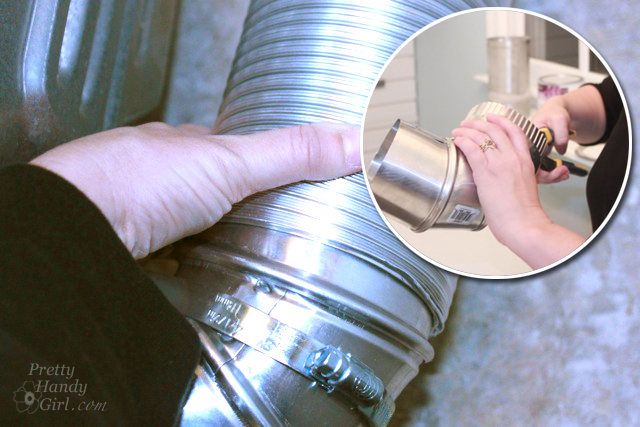
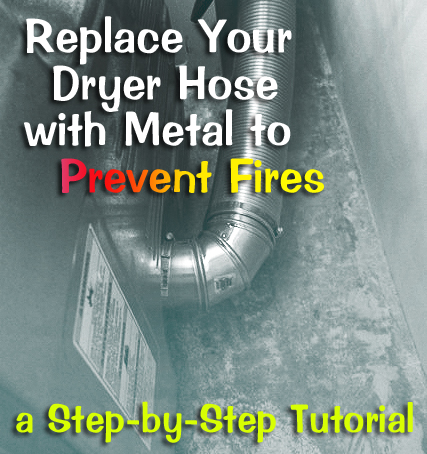
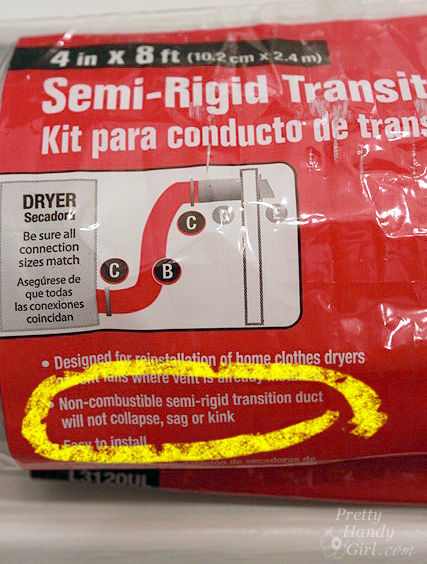
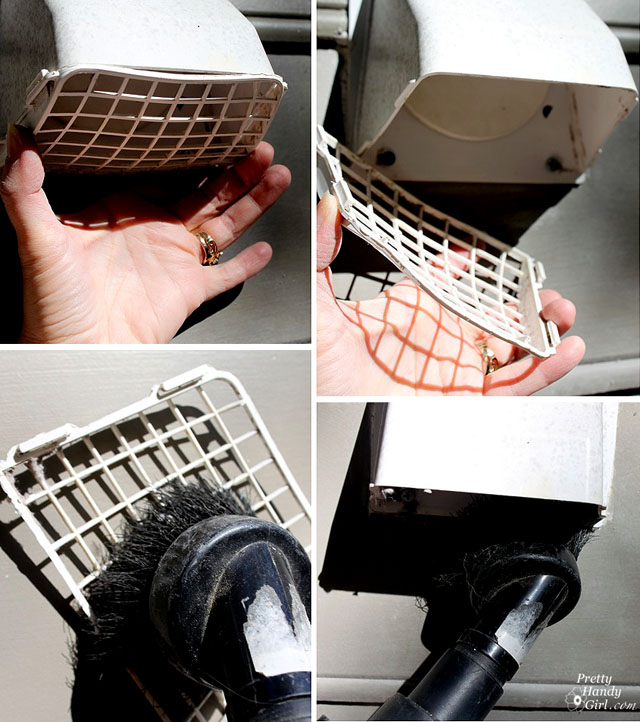
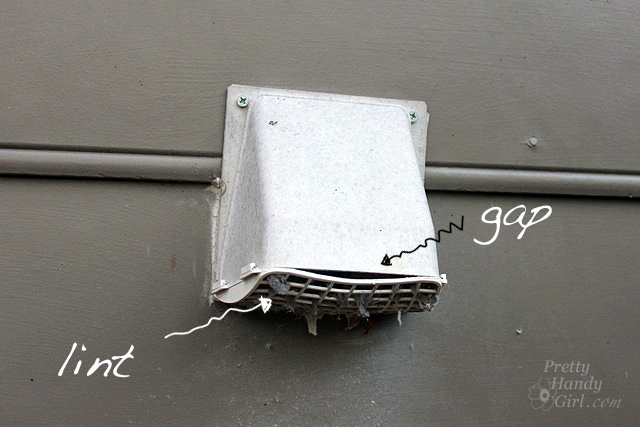
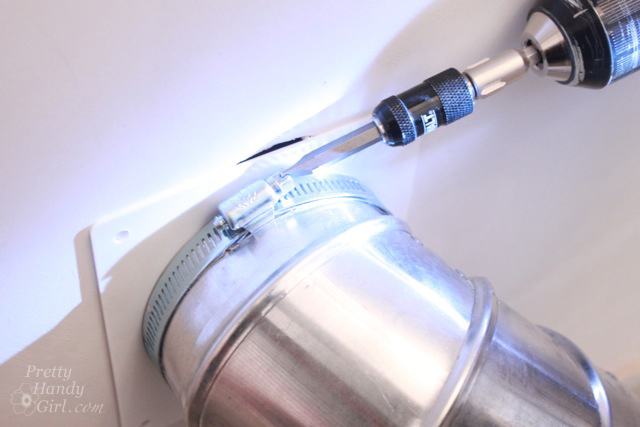
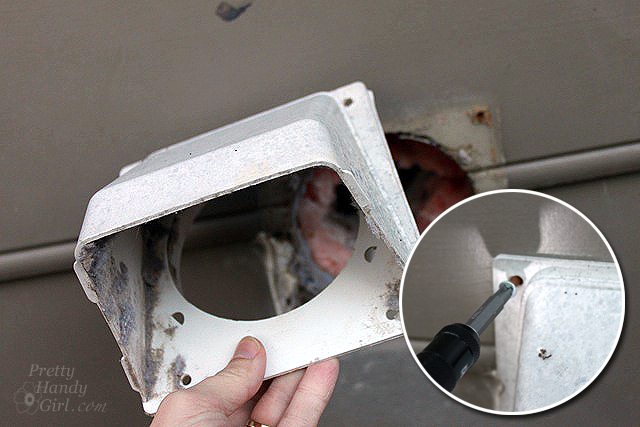
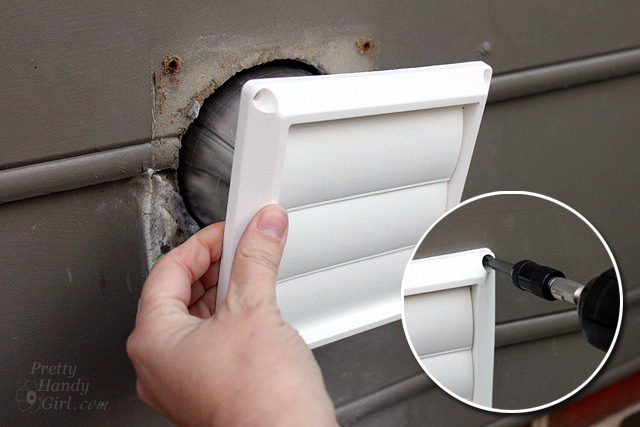

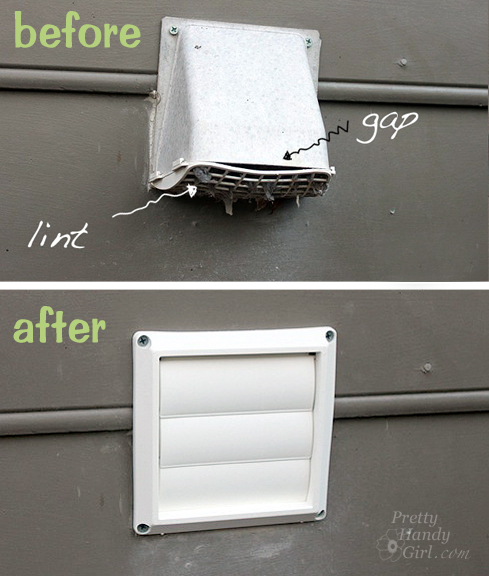
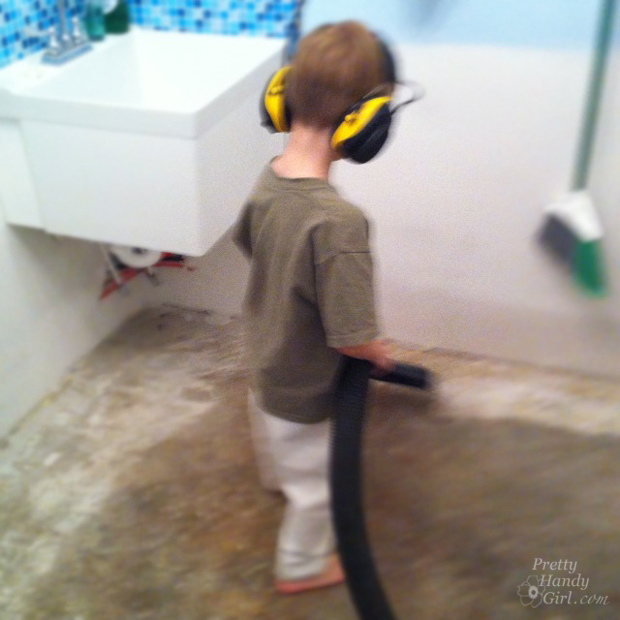
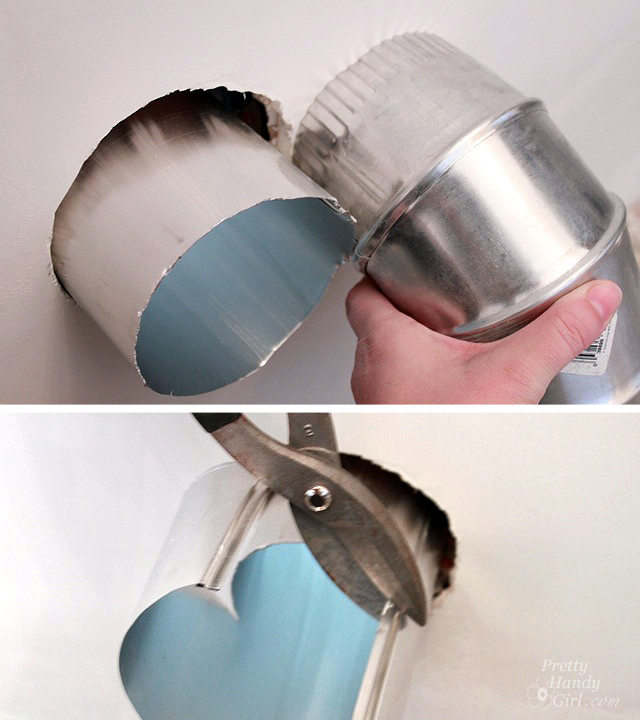
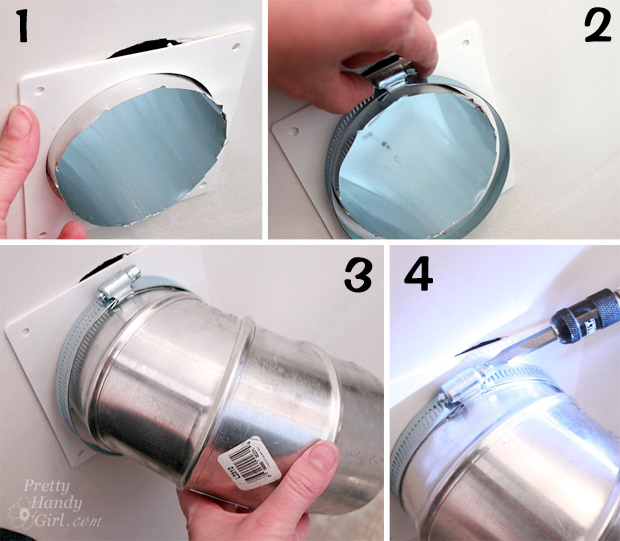
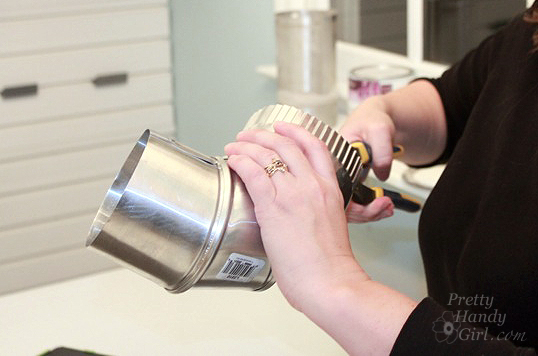
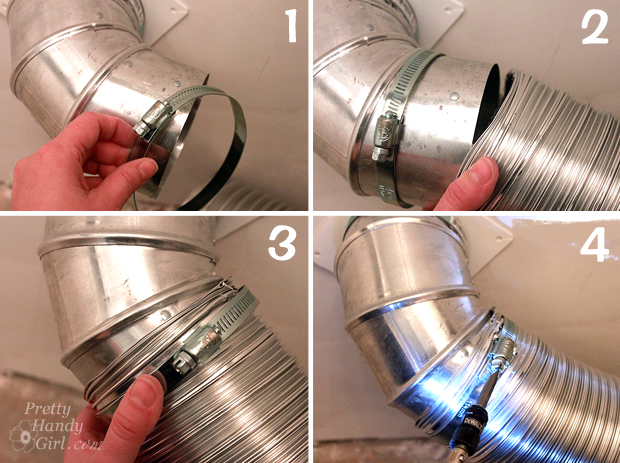

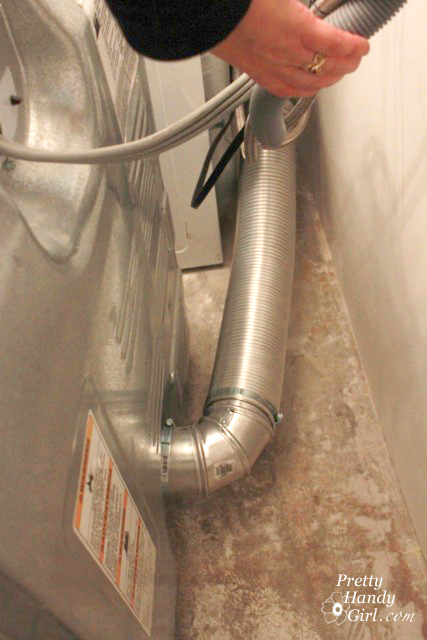

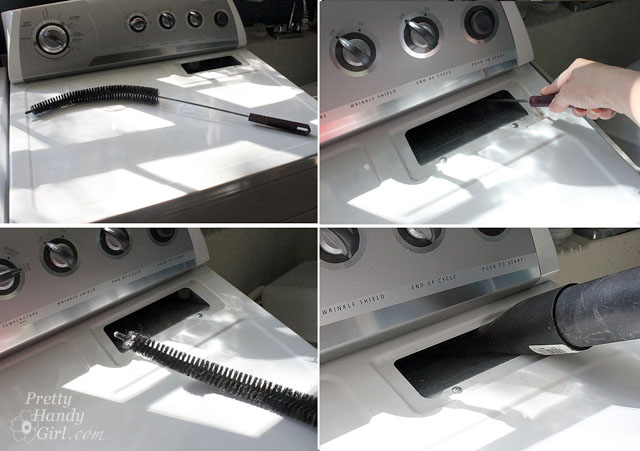
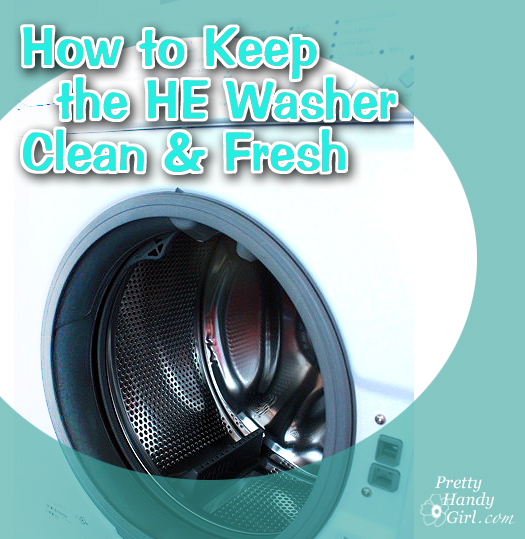

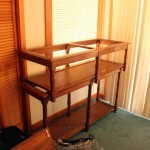
Great advice. Only thing I added was a large enough piece of wood behind the dryer legs to prevent it from being pushed back and possibly damaging the metal vent. Nailing to the floor is not necessary. Thank you.
Edith, that’s a great idea!
Thanks so much for this tutorial! Used it this weekend and the project was actually quite simple.
Even with the new exterior louvered vent, you may want to put a plastic cage over it or a screen inside…I had starlings colonize my stove vent with the louvers in place! You can bet it’s blocked now. I haven’t had this happen to my dryer vent, but I suspect that’s because it’s close enough to the ground that neighbourhood-roaming cats are a risk.
Jill, oh no! I was thinking about the other day when I was installing the range hood vent which has just one large flapper. I might put a cage over that! Thanks for the hint.
You’re very welcome. Given the mess those things made (at least 5 different plugs, one after the other) and the injury sustained by the pest control guy when cleaning it up (he fell off his ladder and tore a tendon in his ankle, poor guy) I don’t want it to happen to anybody else!
Also, thanks for the heads up on the dryer duct issue; I suspect mine needs replacing and I’m definitely going to refer to your tutorial to do it!
I bought a new dryer a few years ago. Last year or so it wasn’t drying well. I had the repairman but he said that he couldn’t fix anything. I needed to get someone to check the exhaust vent and he didn’t work on those. Well, eventually I found someone who would take it on. My vent went to the ceiling, then traveled over the mechanical room for about 8 feet. The outside vent was built into the stone foundation, so you could barely get a hand in there. But, someone else could get in there. When they took down the solid metal pipe thing from the ceiling, over five feet was packed with feathers, straw, dog hair (came from the dryer) twigs, and…a few petrified teeny tiny birds eggs. Someone was sneaking in there and building nests. The dryer works fine now. I needed a new washer so I read all the reviews. I wanted a top loader but everyone was out of stock. I found the one I needed in Costco. They loaded it into my car and I found an installer. Perfect.
Oh Ann, how scary!!! You could have had a fire on your hands.
Thanks for the post i was actually fitting one of these ducts the other day and ran into a few problems, if only i knew your blog was here. Its only when i searched the internet that i came across this blog. I’m sure your tutorials will help me out in the future
It seems that every DIY project will throw at least one wrench in the way. Good for you for persisting!
Thanks Brittany for this great tutorial.
It’s scary how easy the old foil dryer hose caught on fire. The video is a must see for anyone who doesn’t believe in the flammable properties of these kind of hoses.
Your boys are fantastic helpers. I need to start bugging my daughters more 🙂
Jeff, I don’t ask them to help enough. I have to be better about that.
Having the kids help is not only helpful & having together time with them but it’s teaching them how to do these things and about maintaining a home including the safety aspects. Great job!
Where were these tips & all when my kids were growing up?
Great instructions and detailed pictures. I wonder how many people have these flexible flammable dryer hoses?
Yikes, I changed my 30 year old plastic dryer hose about 5 years ago and I installed the shiny one thinking it was metal and therefore safe. I can’t understand why they sell this if it’s not fire proof. I wonder what building codes say..
Hi Brittany!!!
Guess what I’ll be doing tomorrow?? I’ll be visiting my laundry room to make sure my dryer
isn’t a fire hazard.
Thank you so much for caring about all of us. You’re a sweet heart!!
Pam
Yup, I’m safe here. My son in law changed mine out when we bought this house last year. I didn’t realize those “metal looking” ones were that combustible. I just read an article from our local newspaper last week about how prevalent fires are regarding dryer vents. Excellent post! THANK YOU Brittany!
A few years ago one of my louvers had loosened and during spring birds were all coming around to get nesting material from all the lint. While cleaning it out I realized we had that foil stuff in our upstairs long vent.( our laundry closet is in the hallway- so it is about 9 ft. long.)
When we replaced our washer last year I knew that replacing the vent with the solid metal stuff was essential. Thankfully Lowe’s is not too far away as I had to go back and forth 37 million times. I was working on a ladder on my deck, and a hole in the floor in the back of the laundry closet. Long story short—it was a project that lasted a few days. It works so much better than before, but I would’t want to do it again.
fantastic post and tutorial Brittany, thank you for sharing this super important info. we also recently installed this dryer hose, along with those flood safe auto-shut off washing machine hoses and a pan under the washer. not a cute project but definitely important 🙂
thanks again for bringing this one up.